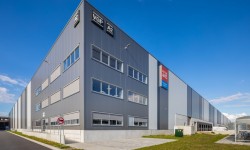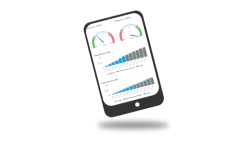How much Inventory should you buy for Peak Season?
As a website owner, with the holiday season just around the corner, you're probably already busy preparing. Have you stocked up enough, or just too much? Of course, you want to avoid last-minute back-orders. But you also don't want to end up with piles of stock when orders start to drop. Active Ants provides a few tips to stay ahead of the peaks and troughs.
Forecast your stock
Purchasing stock is normally a challenge, let alone when orders suddenly go through the roof. Moreover, every retailer has its own peaks and troughs, especially if you sell seasonal products or trendy items. Then, if you also sell on marketplaces in addition to your own webshop, you quickly lose track.
Forecasting your inventory will help you avoid unpleasant surprises. It allows you to estimate how much you need to buy, how fast it sells and what it will ultimately yield. You can track this manually, but as an Active Ants customer you can also use our own Warehouse Management Software (WMS) and special forecasting tool for this. Moreover, our system is designed to easily respond to changing order numbers.
How strong is demand?
As a webshop, you sometimes need to look into the future, especially if suppliers have long delivery times. But for foresight, you need to look back first. So grab your sales history to estimate demand. How many orders come in per month on average, and how does this compare with your best month(s)? Which products always do well, and which ones fly off the shelves during your peak?
If you use Active Ants' software system, you will already get up-to-date sales reports on this twice a day. This will give you an idea of how many extra orders you can expect. To know how much you need to buy, you can also look at the sales percentage: the part of your purchases that is sold within a month. You calculate it like this:

If you sell 70 of the 100 dining chairs you have purchased in a month, your sales percentage is 70 per cent. Then you are doing very well: by far the majority of them are sold quickly. You can calculate your sales percentage per item, but also per product category or brand. This also tells you which products deserve more marketing budget.
How long will a product sit on the shelf?
Of course, you prefer to buy as late and as little as possible. But you also don't want to risk running out of your hard sellers. At the same time, a product on the shelf automatically costs you money: it takes up storage space and loses value over time. To balance this, you want to get a grip on your turnover rate.
Are you an Active Ants customer? Then you can see all your warehouse movements, stock counts and age analyses at the touch of a button. But you can also once calculate your turnover rate during the year:

Say, in a year you sell for 20,000 euros with an average stock value of 5,000 euros. In that case, your turnover rate is 4. This means that your stock needs to be replenished 4 times a year. The higher the figure, the faster products disappear from the shop shelf.
If your turnover rate is roughly equal to the ordering period between two purchase orders x 2 + delivery time, you're fine.
Yet such a calculation doesn't say everything either. Expensive products generally have a slower turnover, for instance. And you don't want to buy a new load of trendy items when they go out of fashion. Moreover, your ordering costs may vary. So your turnover rate is a good guide, but don't cling to it either.
What is the turnover on your Inventory?
Are you constantly running into the limits of your working capital? Then you might wonder whether your stock could be more efficient and therefore cheaper. After all, the faster you sell your items, the faster you bring money back into the store. That is why it is smart to take a close look at the profitability of your inventory.
In Active Ants' WMS system, you can always check your current stock position, daily sales and turnover data. Moreover, we think along with you when it comes to cash flow, such as through an extra generous payment period. You can also test your stock efficiency:

Your stock efficiency is a percentage that you usually calculate per product. This is also called your Return on Investment (ROI), i.e. how much do you get back for every euro you spend? This allows you to weigh up whether it is worth buying an item big. You can boost your efficiency by negotiating a higher turnover rate or discount from your supplier.
Why understanding your inventory is so important
So predicting your inventory can bring you a lot. Especially during a peak, when demand shoots up and down in a short period of time. If you have insight into your warehouse, you will end up with less excess products that you have to sell or even write off. You can also coordinate with suppliers in time to avoid delays. Finally, it allows you to offer customers the best possible experience. Because as long as products are available, you can deliver them quickly.
Optimise your stock with Active Ants
Active Ants can help you with this. With our WMS software and forecasting tool, you have access to the most important data to optimise your inventory. Moreover, our system is built to quickly scale up and down when there is a peak. We can also take care of your return flow and customer service, which are under more pressure at peak times.
read more




